Fruits that start with J are a diverse group that includes a mix of well-known and exotic varieties, from the large, spiky jackfruit to the smaller, sweet jujube. They come in many forms, with flavors ranging from the intense sweetness of ripe jackfruit to the subtle tartness of the jujube.
These J-named food varieties are enjoyed in numerous ways – eaten fresh, used in cooking for sweet and savory dishes, or processed into products like jams and juices.
Their textures vary widely, too, from a Jazz apple’s crispness to a jackfruit’s creamy flesh. Across different cultures, fruits that start with J hold significant culinary and sometimes ceremonial roles, making them favorites in local diets and traditions.
I’ll tell you about some popular fruits that begin with J and their features. Plus, at the end of this article, I’ll introduce you to vegetables that start with J.
Let’s start!
26 Fruits that Start with J with Filters
Below is a list of 26 fruits starting with J, arranged by how popular they are. You can also filter them to see which ones are national, which ones are exotic, which ones can double as vegetables, and which ones work well in dishes, drinks, or as a finishing touch on your dishes.
Jackfruit
- Bangladesh
- Sri Lanka
- Exotic
- For Dishes
- Fruit Vegetables
- National
Jackfruit is the largest fruit that grows on a tree, with some specimens weighing over 100 pounds. Native to India and Bangladesh, the fruit has a spiky, green outer shell and a fibrous, sticky interior that contains both edible flesh and seeds.
The taste of ripe jackfruit is sweet, often compared to a combination of fruits like apples, pineapples, mangoes, and bananas. Unripe jackfruit has a more neutral taste and is commonly used in savory dishes as a meat substitute due to its texture.
Jackfruit can be enjoyed raw or cooked, with ripe fruit often used in desserts and sweet preparations, while unripe fruit is favored in savory dishes. The seeds are also edible when boiled, roasted, or ground into flour.
It is particularly popular in South and Southeast Asia, often cooked in curries, fried, or made into chips. In regions like Kerala, India, and parts of Bangladesh, jackfruit is ingrained in the local cuisine and culture, with festivals like the Jackfruit Festival in Kerala.
Jazz Apple
- For Beverages
- For Garnish
Jazz Apple, a trademarked brand for the Scifresh apple cultivar, emerged from New Zealand in the 1980s, born from a cross between the Royal Gala and Braeburn varieties.
This cultivar, known commercially as Jazz apples, is now cultivated in apple-producing countries across the globe, including the United States, the UK, and Australia.
Renowned for their crisp texture, red and green skin, and a sweet-tart flavor with hints of pear, Jazz apples are celebrated for their juiciness and firmness. These qualities make them excellent for both fresh consumption and culinary uses.
Jazz apples are of consistent quality and are available year-round due to being grown in both the northern and southern hemispheres.
Jujube
- Exotic
- For Beverages
- For Dishes
Jujube, also known as Ziziphus jujuba, is a fruit that originates from China and has been cultivated for over 4,000 years. This small, round fruit resembles a date when mature and dried, featuring a thin, edible skin and sweet, apple-like flesh inside.
The fruit turns from green to brown or purplish-black as it ripens and dries. It is fresh or dried and has a chewy texture and sweet, slightly tart flavor. They’re often used in traditional medicine for their health benefits, including improving sleep and alleviating anxiety.
Jujubes are cultivated in various parts of the world, including the United States, parts of Europe, and Australia, where they thrive in warm climates.
Apart from being eaten as a snack, jujubes are used in cooking, especially in Asian cuisine, to add sweetness to dishes and soups. In many cultures, they’re also brewed into teas or used to make vinegar and wine.
Jujube fruit is celebrated in various Chinese festivals, such as the Double Ninth Festival, symbolizing longevity and prosperity.
Java Plum
- Exotic
- For Beverages
- For Garnish
Java plum, commonly referred to as Jambolan or Jambul, is a tropical fruit native to the Indian Subcontinent and neighboring regions. This oblong, deep purple fruit has a unique, astringent taste when raw and becomes slightly sweet as it matures.
Java plums are known for their high nutritional value, packed with vitamins, minerals, and antioxidants. They are often consumed fresh but can also be used to make juices, smoothies, and even vinegar.
The tree’s bark, leaves, and seeds are also used in traditional medicine for their therapeutic properties, especially in Ayurveda and Unani medicine systems.
Java Plum is widely cultivated in tropical Asia, Australia, and East Africa. In India, where it’s most commonly found, the fruiting season in early summer sees these plums being sold in markets and consumed widely.
Jambu
- Exotic
- For Garnish
Jambu, or rose apple, refers to several species within the Syzygium genus. Native to Southeast Asia, these fruits are cherished across the region for their crisp texture and mildly sweet, aromatic flavor, reminiscent of roses.
Jambu fruits are bell-shaped, ranging from pale green to light pink. They are mostly water, making them incredibly refreshing, especially when chilled and eaten on a hot day.
Jambu is often consumed raw, sometimes dipped in a mixture of salt and chili powder to enhance its flavor. In addition to being eaten fresh, they’re also used in salads, desserts, and even cooked dishes in various Asian cuisines.
Jambu trees are commonly found in tropical gardens for their fruit and ornamental value, with their large, glossy leaves and attractive flowers. In countries like Indonesia, Malaysia, and Thailand, jambu is not just a fruit but a part of the local cultural heritage.
June Plum
- Exotic
- For Beverages
- For Dishes
June plum goes by many names, including Ambarella and Golden Apple, in different parts of the world. Originating from the Pacific Islands, it has been widely adopted in tropical regions globally, including the Caribbean and parts of Africa and Asia.
The fruit is oval, with a tough skin that turns green to yellow or golden as it ripens. Its flesh is crunchy when unripe and becomes softer and juicier as it matures, with a tangy flavor with hints of pineapple and mango.
June plum can be eaten raw, often with salt, pepper, and chili for a savory snack, or made into juices, jams, and chutneys. It’s also used in cooking, adding a tart sweetness to various dishes.
Java Apple
- Exotic
- For Garnish
Java apple, also known as wax apple or water apple, is a tropical fruit native to the Malay Peninsula, Andaman and Nicobar Islands, and the Indonesian archipelago. This fruit has a bell shape, with a skin that ranges in color from pale green to red, pink, or even white.
The flesh inside is crisp and watery, with a mildly sweet taste and a slight rose scent. Its texture and juiciness make it especially refreshing on a hot day, often eaten raw with a sprinkle of salt. Java Apples are also used in salads and as garnishes.
This fruit is widely enjoyed in Southeast and parts of East Asia, where it’s grown for consumption and as an ornamental tree due to its beautiful blossoms and lush foliage.
In regions like Taiwan and Thailand, the Java apple is a popular fruit in the market and has become a part of local culinary traditions.
Jocote
- Exotic
- For Dishes
Jocote is a small fruit native to the tropical regions of the Americas, from Mexico down through Central America to parts of South America. It is part of the cashew family and comes in various colors, including yellow, red, and purple when ripe.
Jocote has a unique taste that balances sweetness with acidity. The fruit can be consumed raw, often with a pinch of salt or chili powder to complement its flavor, or used in various dishes, including savory stews and sweet preserves.
Beyond its culinary uses, the jocote tree is valued for its fast growth and shade-providing canopy.
Juneberry
- For Beverages
- For Dishes
Juneberry, also widely known as Saskatoon berry, is a small, round fruit native to North America, particularly found in Canada and the Northern United States. It belongs to the Amelanchier genus, which comprises several species that produce similar edible fruits.
These berries resemble blueberries in size and color but have a unique flavor profile—sweet and nutty, with a slight almond essence from the seeds.
They ripen in early summer, hence the name, and can be eaten fresh or used in various culinary applications, from pies and jams to savory sauces that accompany meats.
Johannisbeere
- For Beverages
- For Dishes
Johannisbeere, known in English as redcurrant or blackcurrant, is a small, tart berry native to parts of Europe and Asia.
Johannisbeere can refer to either the red or black varieties, with redcurrants being bright red, translucent, and tart. At the same time, blackcurrants are dark purple to black, with a more potent, earthy flavor profile.
These berries are commonly used in jams, jellies, syrups, desserts, and savory dishes for a burst of acidity.
Redcurrants and blackcurrants are widespread throughout Europe, particularly in German-speaking countries, where “Johannisbeere” gets its name (Johannis meaning “John’s” in reference to St. John’s Day around the time they ripen).
Jelly Palm
- Exotic
- For Beverages
Jelly palm, Pindo Palm, or Butia capitata, produces fruit that delights those familiar with it. This palm is native to South America, particularly Brazil, Uruguay, and Argentina. The fruit it bears is small, oval, and has a yellowish-orange to reddish color when ripe.
Its taste combines pineapple, apricot, and banana, with a slightly tart and sweet flavor that makes it perfect for making jellies. The fruit can be eaten fresh off the tree but is often used to make jams, jellies, and wines.
Juniper Berry
- For Beverages
- For Dishes
Juniper berry is not actually a berry but a seed cone produced by various species of junipers. It is small, spherical, and typically blue to blackish, covered with a whitish wax that gives it a berry-like appearance.
The flavor of juniper berries is distinctively spicy and piney, with a slightly bitter aftertaste, making them a key ingredient in European and particularly Scandinavian cuisine.
They are famously used to flavor gin, lending the spirit its characteristic taste. Apart from their use in beverages, juniper berries are also used to season game meats, pork, and lamb dishes, as well as in sauces and stuffings.
Jostaberry
- Exotic
- For Beverages
- For Dishes
Jostaberry is a fruit hybrid that combines the black currant and the gooseberry. It’s larger than a black currant but smaller than most gooseberries, with a dark purple, almost black color when ripe. The taste of Jostaberry is a mix of sweetness and acidity.
This makes it versatile for fresh and culinary consumption, including jams, jellies, pies, and beverages. Originating from Germany in the 1970s, Jostaberry has gained popularity in various parts of Europe and North America.
Jatoba
- Exotic
- For Beverages
Jatoba, or Hymenaea courbaril, is highly valued in its native regions of Central and South America. The fruit of the Jatoba tree is large, brown, and pod-like, containing edible seeds surrounded by a dry, sweet, and mealy pulp.
This pulp is often eaten raw or used to make a refreshing drink, particularly in the Amazon region. The taste of Jatoba fruit pulp is sweet, with a texture and flavor that some compare to dried fruit or flour.
Junglesop
- Exotic
- For Beverages
- For Dishes
Junglesop, belonging to the Annona family, is a fruit native to Africa, specifically found in regions stretching from Senegal to Sudan. It’s part of the broader soursop family, with its fruit-bearing a similarity in taste and appearance to the more widely known soursop or graviola.
The junglesop fruit has a green, spiky exterior with soft, fibrous, and creamy white flesh inside. Its taste is often described as a blend of pineapple and banana, with a slight tanginess and a rich, custardy texture.
This fruit is typically enjoyed raw, with the flesh scooped out and consumed directly. It can also be used in desserts, smoothies, and savory dishes.
Jabuticaba
- Exotic
- For Beverages
- For Dishes
Jabuticaba is a Brazilian grape tree fruit, remarkable for its peculiar growth habit; the fruit grows directly on the trunk and branches of the tree. The fruits are round, about the size of large grapes, and have a thick, purple-black skin with a translucent, whitish pulp inside.
Jabuticaba’s flavor is sweet and tangy, similar to a combination of grape, cherry, and lychee. It’s highly perishable, often consumed fresh within days of harvest. Beyond eating fresh, jabuticaba is used to make jellies, wines, and liqueurs.
Jabuticaba is profoundly linked with Brazilian culture, particularly in the states where it grows abundantly, such as Minas Gerais and São Paulo.
Jacaratia Mexicana
- Exotic
- For Dishes
Jacaratia Mexicana, commonly referred to as Mexican papaya or wild papaya, is a fruit-bearing tree native to Mexico and Central America.
Unlike the common papaya most are familiar with, Jacaratia Mexicana produces a smaller fruit, which, when ripe, offers a soft, sweet flesh that is highly aromatic. The fruit’s exterior is green, turning yellow or orange as it matures, with a round to oblong shape.
Inside, the flesh is orange with a central cavity filled with black seeds, similar to its more well-known cousin. People enjoy it fresh, but it can also be used in cooking, especially in local dishes whose sweetness complements both savory and sweet recipes.
Jacaratia Spinosa
- Exotic
- For Dishes
Jacaratia Spinosa, known as the spiny wild papaya, is another member of the Caricaceae family, native to South America. This species is characterized by its spiny trunk and branches, a distinctive feature that sets it apart from the smooth-skinned varieties.
The fruit of Jacaratia Spinosa is similar in taste and appearance to that of Jacaratia Mexicana, with a sweet, fragrant pulp enjoyed by both humans and wildlife.
It tends to be more elongated, and its skin develops a reddish hue when ripe. The fruit is commonly eaten fresh in the regions where it grows, and like its cousin, it’s valued for its nutritional content, including vitamins and minerals.
Jabara
- Exotic
- For Beverages
Jabara is a citrus fruit native to Japan, specifically from the Wakayama Prefecture. It’s part of the citrus family and is similar in appearance to a yuzu or a small grapefruit but with a unique character of its own.
The fruit has a bumpy, yellow-orange skin when ripe and contains juicy, acidic flesh inside. The taste of Jabara is tart and somewhat bitter, akin to a cross between a grapefruit and a lemon, making it less commonly enjoyed raw and more often used as a flavoring agent.
Jagua
- Exotic
- For Beverages
- For Dishes
Jagua is a tropical fruit found throughout Central and South America. The fruit is round to oval, typically the size of a small orange, and has a smooth, thick skin that turns from green to a deep blue-black when ripe.
The flesh inside is gelatinous and ranges from translucent to a creamy white, with a subtle, sweet flavor often compared to a combination of banana and pear. Jagua is eaten fresh in the regions where it grows and is used to make juices, jams, and desserts.
Jam Melon
- Exotic
- For Beverages
- For Garnish
Jam melon, also known as the Queen Anne’s pocket melon or plum granny, is a type of muskmelon that is more ornamental and aromatic than widely eaten.
Originating from the regions of Africa and possibly brought to the Americas by slaves, this small melon has a highly fragrant smell, historically making it a natural air freshener for linens and rooms.
Its exterior is yellow with stripes or mottling, resembling a small watermelon, while the inside flesh is pale and mildly sweet but often considered too bland for modern palates.
Traditionally, it was used to make preserves or jams, hence its name, but today, it’s grown mainly for its decorative and aromatic qualities.
Japanese Persimmon
- Japan
- For Dishes
- For Garnish
- National
Japanese Persimmon, known scientifically as Diospyros kaki, is native to East Asia and prominently grown in Japan, China, and Korea. It’s a significant fruit in Japanese culture, appreciated for its beauty as much as for its taste.
The fruit varies in color from light yellow-orange to dark red-orange. There are two main types based on the astringency level: astringent (Hachiya) and non-astringent (Fuyu).
Hachiya persimmons are acorn-shaped and must be fully ripe and soft before eating, while Fuyu persimmons are squat and can be eaten while still slightly firm, offering a sweet, honey-like flavor with a crisp texture.
Japanese Persimmons are enjoyed fresh, dried, or used in cooking, adding sweetness to dishes and desserts. In Japan, they symbolize autumn and are associated with various cultural practices and celebrations, such as the New Year.
Japanese Plum
- For Beverages
- For Dishes
Japanese plum, also known as ume, is a stone fruit resembling both plums and apricots. Native to East Asia, it is particularly revered in Japan, where it holds significant cultural and culinary importance.
The fruit is small, with a green to yellow or red appearance when ripe. Its taste is uniquely tart and slightly sweet, making it less commonly eaten fresh and more often used in processed forms.
Ume is famously pickled to make umeboshi, a salty and sour condiment, or brewed into plum wine (umeshu). The blooming of the ume tree is also celebrated in Japan, signaling the arrival of spring and symbolizing perseverance and renewal.
Japanese Pear
- For Beverages
- For Garnish
Japanese pear, known in Japan as nashi pear, contrasts with European pear varieties in its round, apple-like shape and crisp, juicy texture. The skin ranges from green to yellow; the flesh inside is white, crunchy, and filled with sweet, watery juice.
Nashi pears are fresh, often chilled, and cut into slices, making them a popular summer treat. They can also be used in salads, desserts, or cooked dishes where their sweetness complements savory flavors.
Nashi pears are widely cultivated in East Asia, particularly in Japan, China, and Korea, each country having its varieties, such as Hosui, Kosui, and Nijisseiki in Japan.
Jamaican Tangelo
- Exotic
- For Beverages
- For Garnish
Jamaican tangelo, commonly known as Ugli fruit, is a citrus fruit that resulted from a hybrid between a grapefruit, an orange, and a tangerine. It’s native to Jamaica, as the name suggests, and has become one of the island’s unique exports.
The fruit’s name reflects its appearance; it has a rough, wrinkled, greenish-yellow skin that might not look appealing at first glance, but inside, it houses a juicy, tender flesh that combines the sweet and tangy flavors of its citrus parentage.
The taste is often described as milder and sweeter compared to a grapefruit, without the latter’s bitterness. Ugli fruit is typically eaten fresh, the flesh segmented like an orange or a grapefruit, but it can also be juiced or used in salads, desserts, and even cooking.
The Ugli fruit has grown in popularity in various parts of the world, including the United States and Europe.
Jamaican Cherry
- Exotic
- For Beverages
Jamaican cherry is a small fruit native to the Caribbean, Central, and South America, now found in many parts of Southeast Asia. The fruit is round, about the size of a large cherry, and has a bright red to deep maroon color when ripe.
Its sweet taste is reminiscent of cotton candy, making it a hit for children and adults alike. The Jamaican Cherry can be eaten fresh off the tree and is ideal for jams, jellies, and even wines.
The Jamaican cherry is more than just a sweet treat in the regions where it grows. It’s a part of everyday life, often found in backyards and along streets, and is easily accessible for a quick snack.
Which Vegetables that Start with J Are Most Popular?
Here are three well-known vegetables beginning with J:
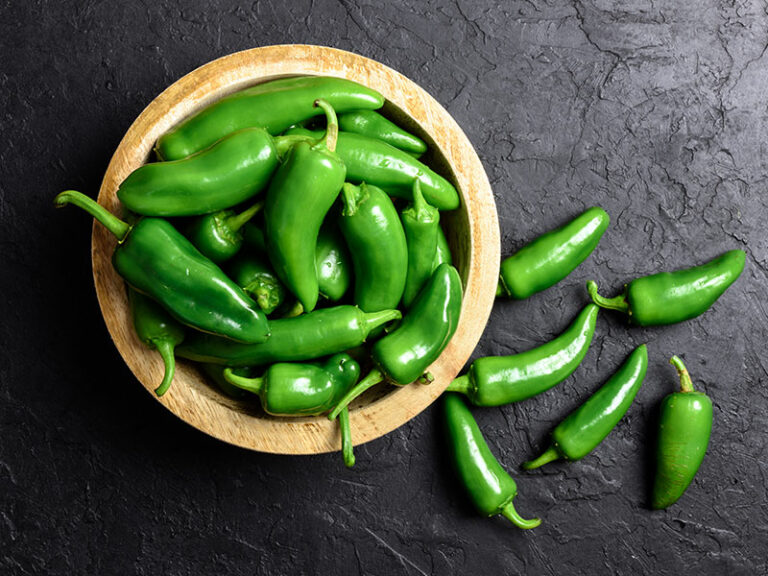
Jalapeño
Jalapeño is a medium-sized chili pepper known for its hot, burning sensation when eaten.
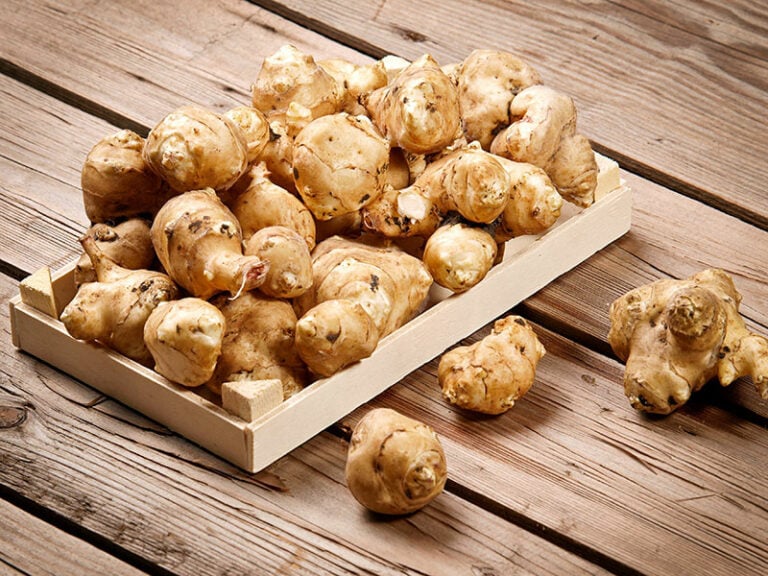
Jerusalem Artichoke
Jerusalem artichoke is a root vegetable known for its nutty, sweet flavor, resembling a rough, brown-skinned tuber.
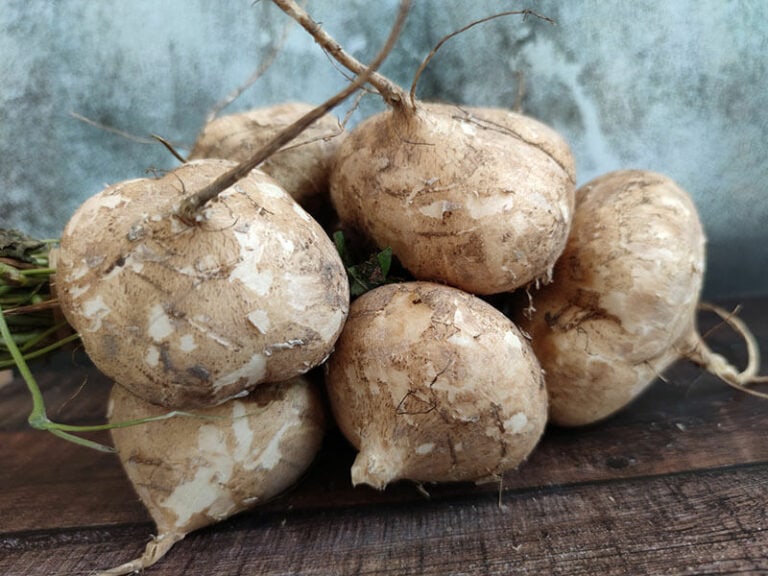
Jicama
Jicama is a crunchy, sweet root vegetable, often eaten raw in salads or cooked in savory dishes.
Just so you know, this isn’t all of them. More veggies are starting with J out there for you to find.
I hope you’ve enjoyed exploring the diverse world of “J” fruits and vegetables with me. Do you have a favorite or a suggestion for our next alphabetical adventure? Share your thoughts in the comments below—let’s decide whether “K,” “L,” or “M” is up next together!


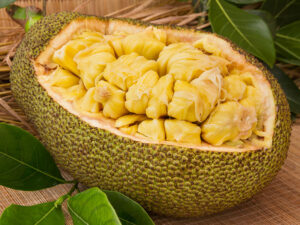
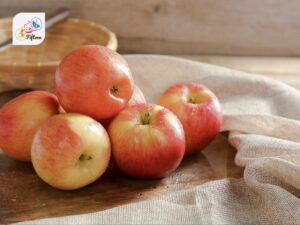
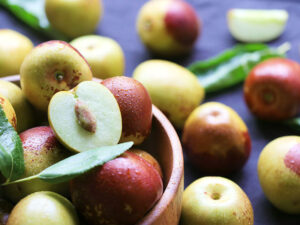
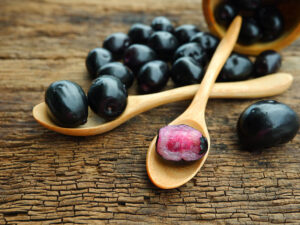
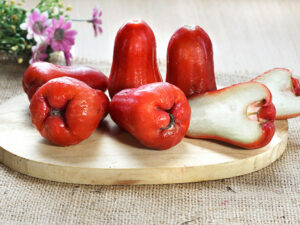
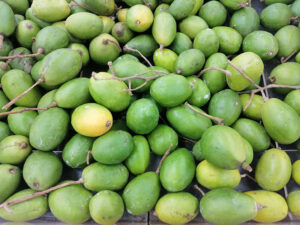
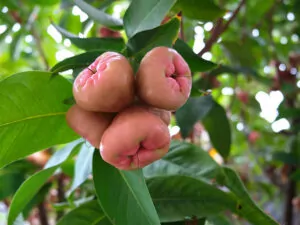
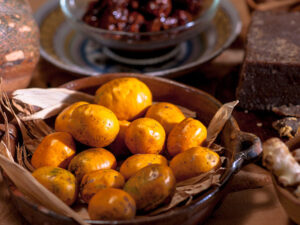
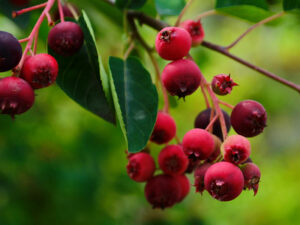
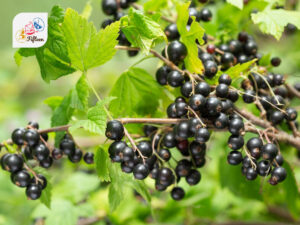
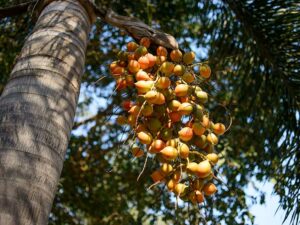
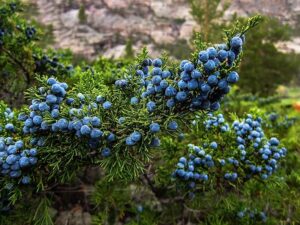
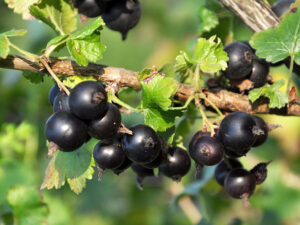
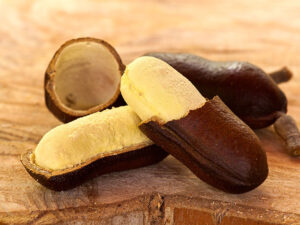
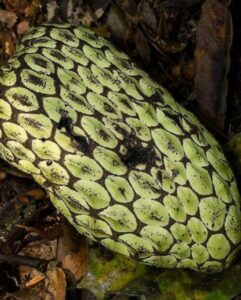
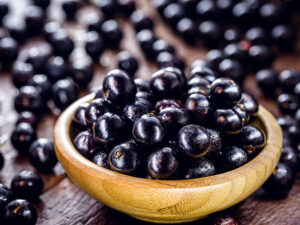
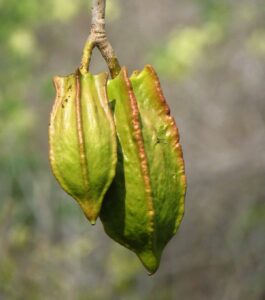
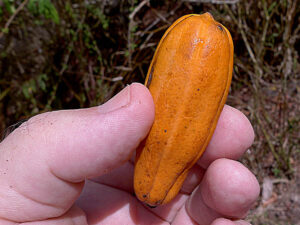

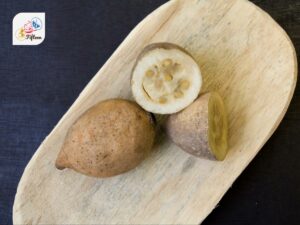
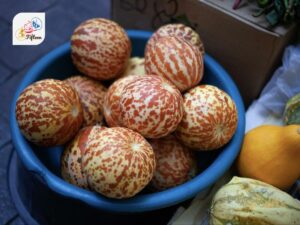
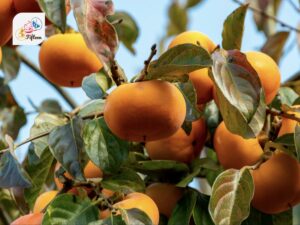
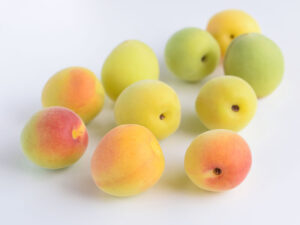
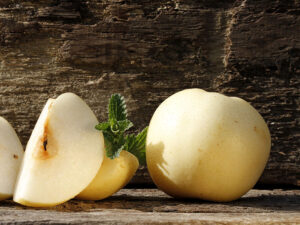
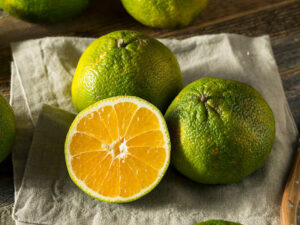
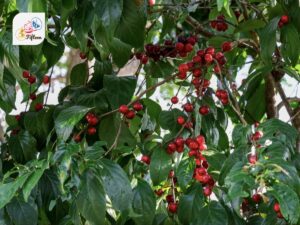
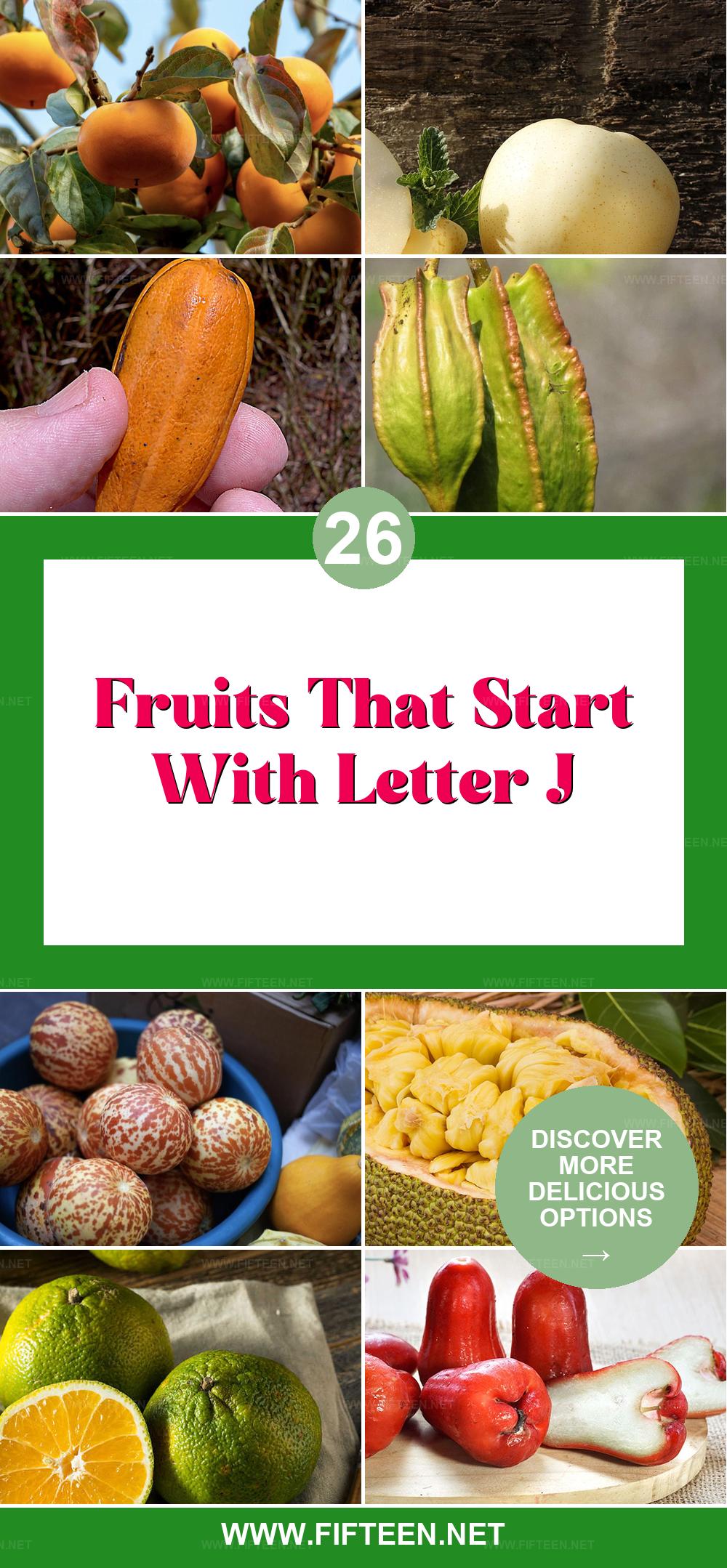
Jamie Scott
Editor in Chief, Senior Content Writer
Expertise
Home Cooking, Meal Planning, Recipe Development, Baking and Pastry, Food Editor, Cooking-video Maker, Western Food Evaluation Expert
Education
Le Cordon Bleu College of Culinary Arts
Local Community College, New York, NY
Jamie Scott is a skilled culinary expert and content creator specializing in Western cuisine. With over 15 years in the culinary field and formal training from Le Cordon Bleu, Paris, Jamie deeply understands how to blend nutrition with delicious flavors. His passion for cooking matches his commitment to making healthy eating accessible and enjoyable.
On Fifteen.net, Jamie brings a fresh perspective to classic dishes and beverages, offering readers insightful recipes, cooking tips, and a fresh view on meal planning that emphasizes taste, health, and simplicity.